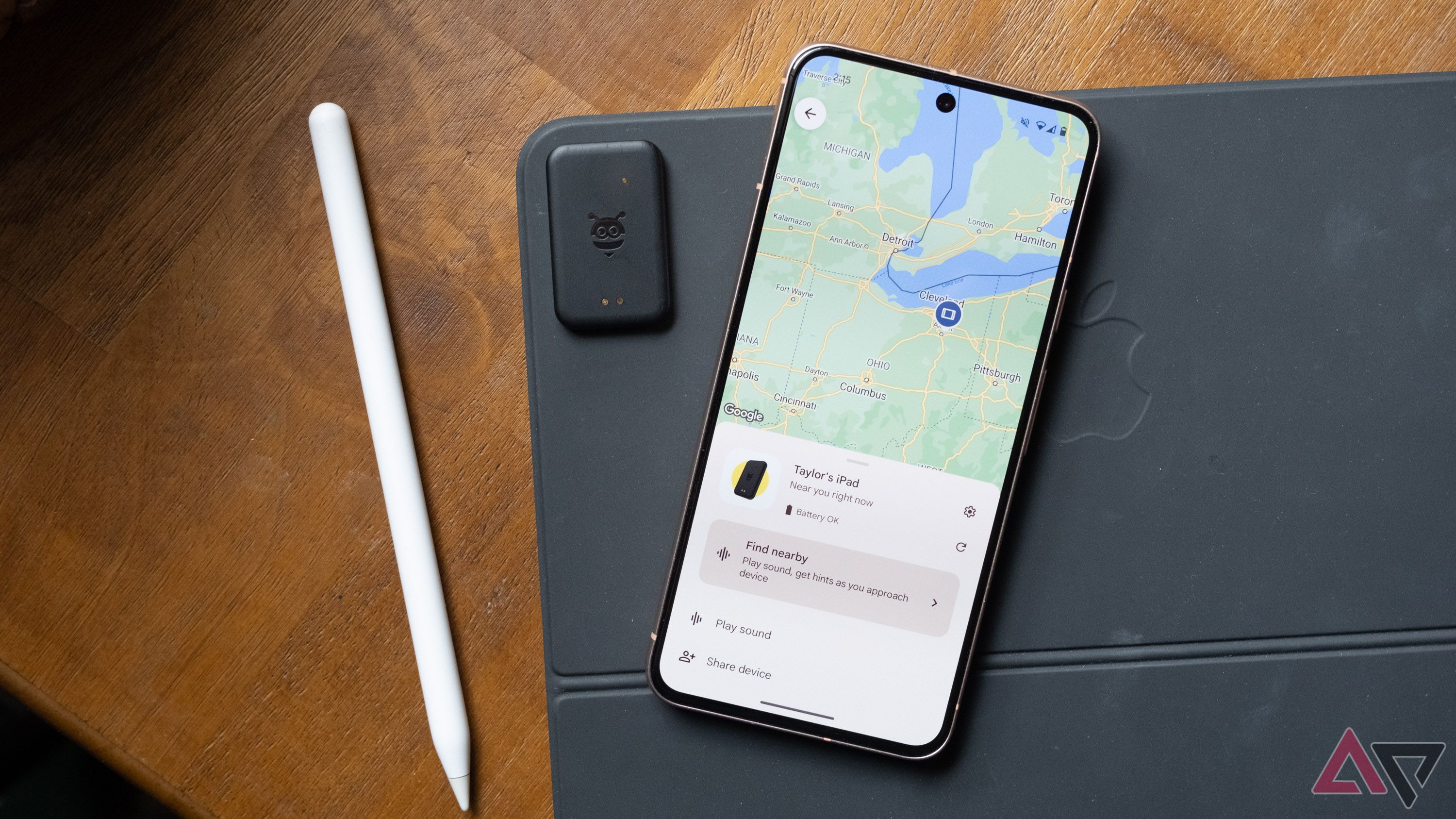Summary
- One Redditor tested Google’s Find My Device network against Apple’s Find My Network by shipping an AirTag and a Pebblebee tracker to a different state and tracking the package through the respective apps.
- The Pebblebee Tracker struggled to provide location updates, while Apple’s AirTag consistently updated throughout the journey.
- Google’s Find My Device network is still nascent and opt-in, limiting its effectiveness compared to Apple’s Find My Network. Google is reportedly working on improving its network’s speed and reliability.
Google’s Find My Device network made its official debut earlier in April this year, with a key feature that allows users to find certain devices after they’ve been powered off, alongside upcoming UWB support that will put the network head-to-head with Apple’s.
Since the network has gone live, Pebblebee has released three trackers compatible with Google’s Find My Device network, namely the Tag Tracker, a Clip Tracker, and a Card Tracker, all of which are also available to purchase directly on the Google Store. However, a recent experiment has cast a shadow of doubt on Pebblebee’s trackers, highlighting Google’s Find My Device network’s shortcomings.

Related
Pebblebee Tag for Android review: I couldn’t Find My Device
Google’s new crowdsourced item tracking isn’t ready for primetime
A Reddit user who goes by the name of Chiselplow recently put a Pebblebee Tracker (the Redditor didn’t mention which one) and an Apple Air Tag in a box and mailed them to another state. TL;DR: The Pebblebee tracker was only able to provide its location update on a handful of occasions, while the Apple AirTag provided frequent updates, all the way to the package’s destination.
Part of the problem here is that Google’s Find My Device network is still nascent, and users have not started using it yet. For reference, while Apple’s Find My Network is opt-out by default, Google’s is opt-in — at least in a sense. By default, Google’s Find My Device network uses a “With network in high-traffic areas only” setting, which essentially limits trackers to being pinged only when they’re in busy areas with multiple other Find My Device network participants nearby.
Google is reportedly aware of the network’s issues and is working on improving its speed and reliability.
For those interested, here’s a more detailed breakdown
The test began on Wednesday, July 3, with the Redditor shipping out both trackers in a box. According to Chiselplow, the Apple AirTag constantly updated its location, but the Pebblebee tracker didn’t update its location even when it was at the local post office, which should qualify as a high traffic area. “The Air Tag updated on the roads both in the postal carrier truck and also the semi that hauled it from my local city to a major city sorting hub. That PB didn’t find a single Android soul to connect to the entire time,” wrote Chiselplow. The Pebblebee only updated its location after reaching a large USPS sorting warehouse. It “took almost 11 hours before pinging to a new location,” wrote Chiselplow.
Things took a turn for the worse the next day. The Redditor could see that the package hadn’t left the warehouse overnight, thanks to the constant AirTag updates. The Pebblebee, on the other hand, lost its one and only location update, and reverted to displaying the package’s original location, i.e., the OP’s house. “When I ask it to update, it just spins for a moment and continues to say it was last seen at my home,” wrote Chiselplow.
Two days later, the package finally made its way to the recipient, all while the Pebblebee tracker going back and forth between the warehouse and the trackers’ original pre-shipping location. The OP wrote that the recipient will mail the package back to them, which should allow for further testing. However, a round-trip isn’t necessarily warranted to state that the AirTags and Apple’s Find My Network have set a benchmark that Pebblebee trackers with Google’s Find My Device network haven’t yet approached, and they’re not quite ready for prime time.
In the US, as of June 2024, Apple holds 55 percent market share. This essentially means that the Pebblebee couldn’t be pinged by more than half the surrounding devices, be it on the road or in the warehouses it was kept overnight in. The OP added that they intend to travel to a country with a 78 percent Android market share soon, where Pebblebee trackers should perform better than Apple’s AirTags, at least on paper. OP’s Reddit post has more findings from the test, like the fact that the Pebblebee trackers wouldn’t even show up on the Find My Device page in a web browser, and would only pop up on the phone app.
Source link

